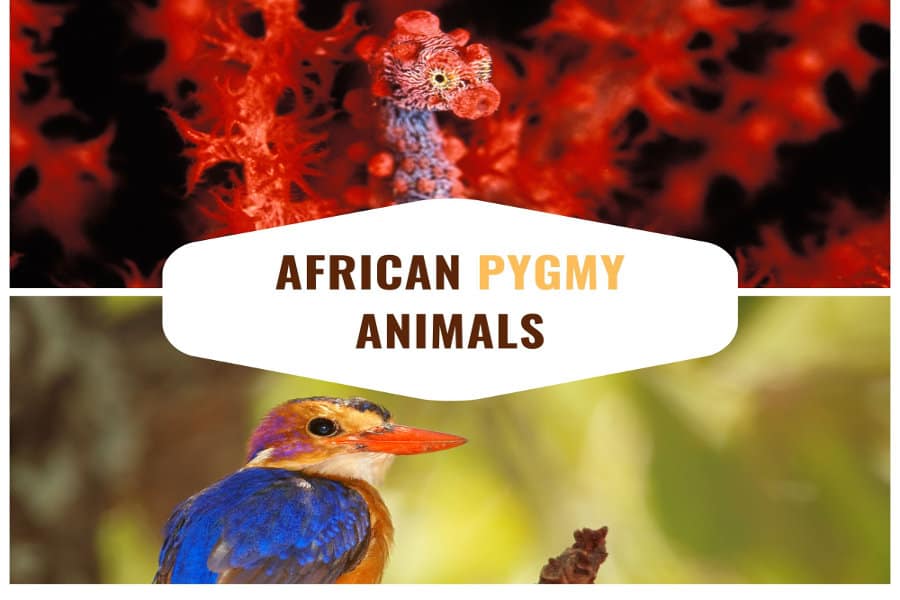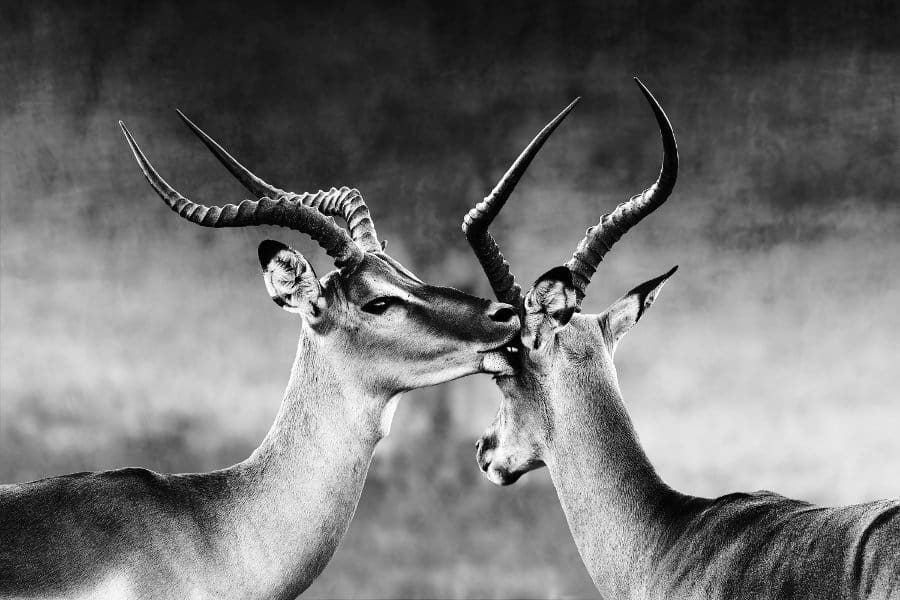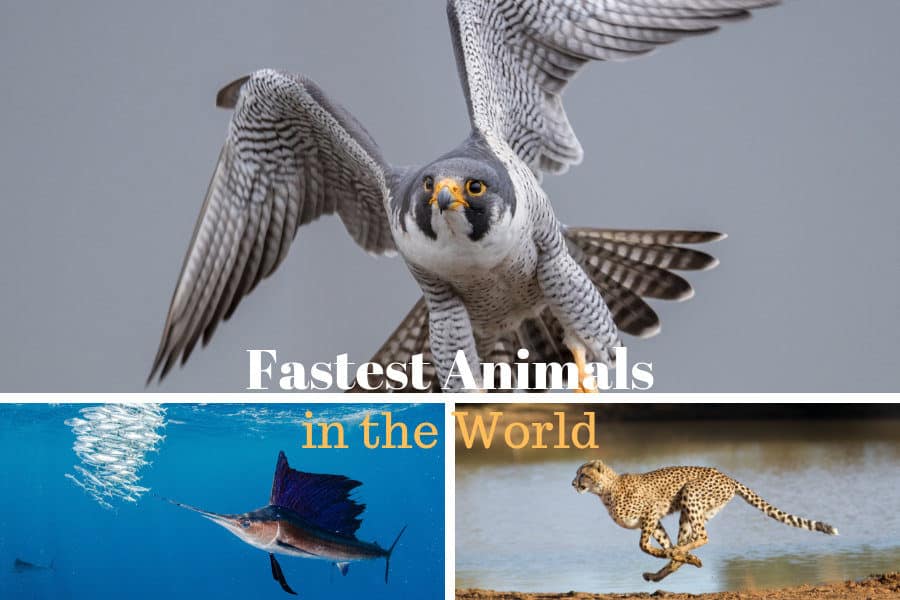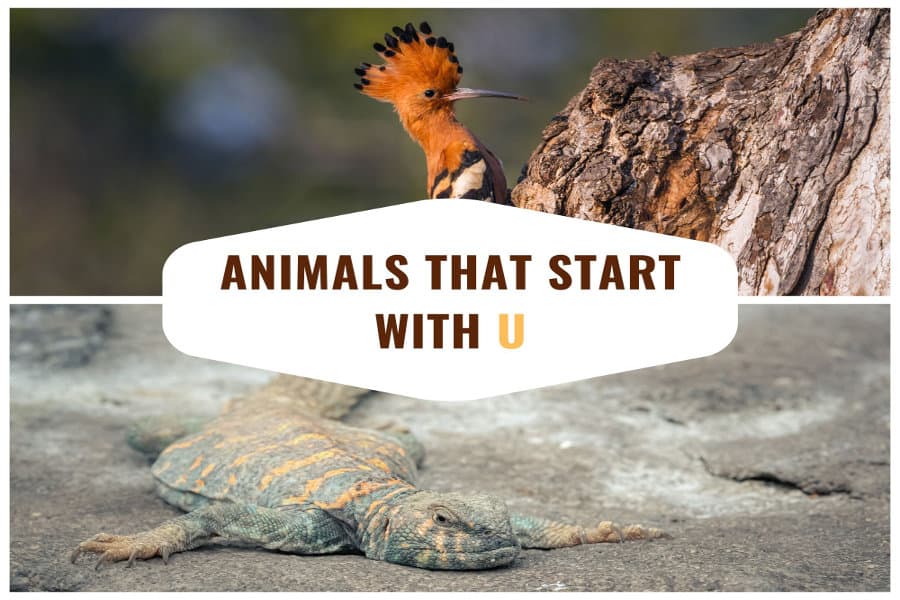There is no denying that Africa has some of the most interesting and unique animals in the world. Giant animals, apex predators, interesting birds, and creepy-crawlies call the large continent and its diverse landscapes home.
But hidden out of plain sight are bite-sized creatures – almost exact miniature copies of their larger relatives. Most of these pygmy animals are elusive and shy, while some of them are under threat with dwindling populations. Others were only recently discovered.
Introducing six of Africa’s minute creatures, ranging from ocean dwellers to suburban garden guests.
Pygmy Hippopotamus
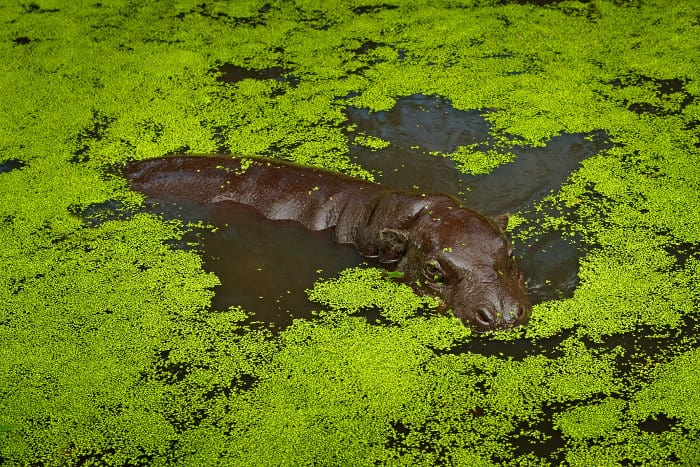
Is there anything better than little big animals? The first animal on this list of pygmy animals is not even that small. However, the elusive pygmy hippopotamus is only half as tall as the common hippo and a quarter of its weight.
Adult pygmy hippos are between 70 – 80 cm tall and a newborn weighs around 4.5 to 6.5 kg. This might seem like a considerable weight yet it is nothing compared to the 23 to 50 kg hippo calves.
Unfortunately, there are only about 2000 pygmy hippos in the swamps and forests of West Africa. Liberia has the biggest population of these unique animals.
While the common hippo is gregarious, territorial, and feisty, the pygmy hippo is reclusive, solitary, and non-confrontational. In fact, they tend to ignore other hippos completely.
African Pygmy Hedgehog
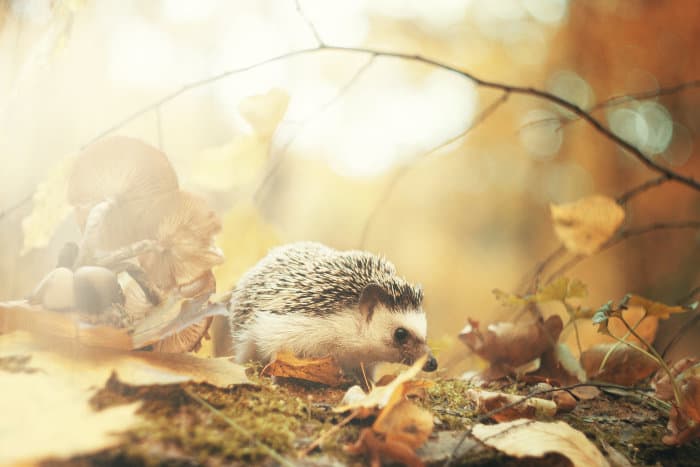
This unique little guy is the size of a prickly grapefruit when rolled up and is one of the cutest pygmy animals. These fruit-sized hedgehogs are around 17 – 22 cm when relaxed and have an estimated 30 000 sharp spines.
They might be small, but they turn into an impenetrable ball of spikes making it almost impossible for attackers to make a meal of them.
The African pygmy hedgehog makes a home out of a variety of habitats, from savannahs to suburban gardens. They are widely dispersed throughout Africa, as far north as Senegal, and all the way down to Zambia.
These nocturnal animals have a superpower sense of smell that leads them to food. They also have a high tolerance for toxins which means they can munch on venomous snakes and poisonous scorpions with no problem.
African Pygmy Kingfisher
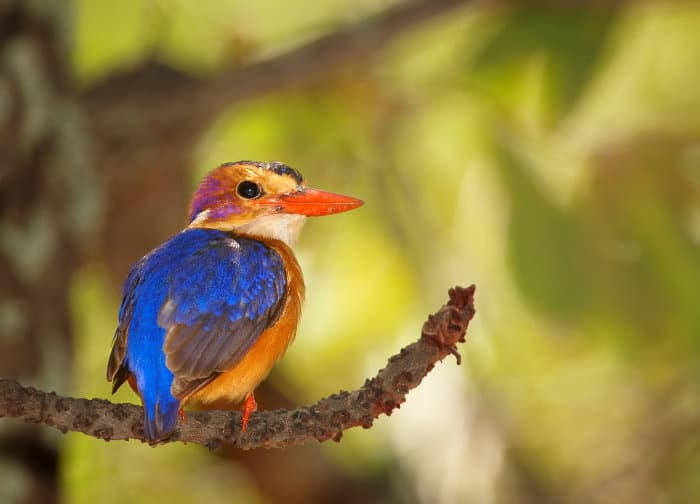
The only bird which makes the pygmy animal list, and a spectacularly beautiful one at that. As its name suggests, this is the smallest kingfisher in South Africa, approximately 11 – 13 cm in length.
The striking colors of this bird are magnificent. It has an orange face and breast with a purple cheek smudge and a dark blue crown. It is often mistaken for the malachite kingfisher, although the malachite is larger.
Unlike many kingfishers, the African pygmy is not bound to water as it feeds on insects. If you’re lucky enough to spot this little flash of color, it will be in countries south of the Sahara in woodlands, savannahs, or coastal forests.
Marshall’s Pygmy Chameleon

This tiny chameleon goes by many names, including the Marshall’s dwarf chameleon and the Marshall’s leaf chameleon. It calls the forests of Zimbabwe and Mozambique home.
Unlike other chameleons, which are usually striking in color, these are usually deep brown or yellowish-green, depending on the surroundings in which it’s trying to blend in.
The minute chameleon is about 3.2 – 7.5 cm in length and has a dorsoventrally flattened head and body which gives it the appearance of a leaf – hence the name ‘leaf chameleon’.
These chameleons are not even the smallest chameleon breed in Africa. They are giants compared to the 29 mm long Brookesia Micra found in Madagascar.
Common Dwarf Mongoose

Introducing Africa’s smallest carnivore, the tiny and ferocious dwarf mongoose. Weighing a whopping 350 – 400 grams and 250 mm in length, termites are never safe when these little predators are around.
Much like the common mongoose, they are very vocal. Communication is highly important for coordinating large groups as they forage and hunt over a large area.
Twitters, whistles, and whoops are a common sound to hear among a mob of dwarf mongooses. This flurry of vocalization is important because, being so miniature, there’s often no unobstructed line of sight to one another.
These little carnivores hang out in groups of up to 30 (called a ‘gang’, ‘pack’, or ‘mob’) and inhabit dry savannah areas. They are extremely social and have a strict group hierarchy, which is probably necessary when running a tiny gang.
Pygmy Seahorse
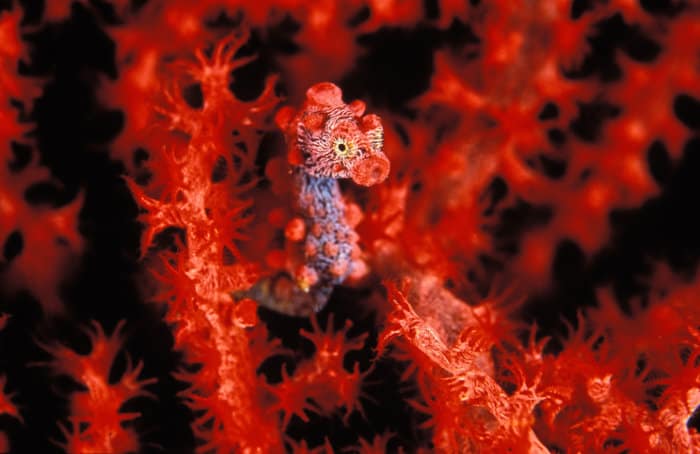
There is a brand new lentil-sized seahorse, a new species discovered in the waters of South Africa’s east coast.
It’s a strange discovery as it is the first of its kind spotted in the Indian Ocean, nevermind in Africa. And its pygmy relatives live thousands of kilometers away in South East Asia.
No bigger than a fingernail, this tiny seahorse grows to just over 2 cm. It’s different from other pygmy seahorses only in its spines on its back. The newly discovered Hippocampus nalu (meaning ‘here it is’ in Xhosa and Zulu) has sharp spines, while its closest relatives have flat-tipped spines.
A diver discovered the unknown species in Sodwana Bay in 2019, and is an exciting reminder of how many undiscovered creatures are lurking in the oceans.
Africa’s Awesome Pygmy Animals
These small wonders of Africa are easily missed, camouflaged as leaves, or hiding deep in the oceans. Big cats and giants of the plains are quick to steal the attention of visitors in Africa.
But can you imagine the fascinating experience of coming across what seems like a shrunken hippo? or a chameleon no bigger than your toenail?
Next time you book an African safari, remember to search the trees for a brilliant flair of color or listen for the chatty conversations of the dwarf mongoose. You might just be lucky enough to spot some of the continent’s pocket-sized creatures. Or discover a new one!
